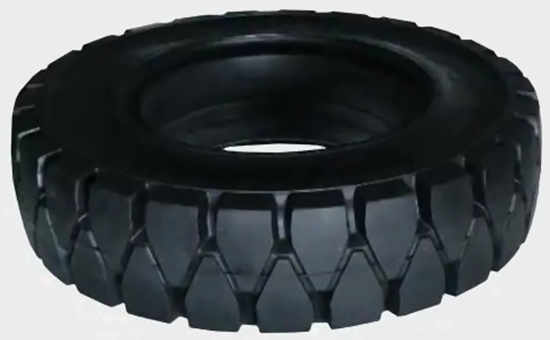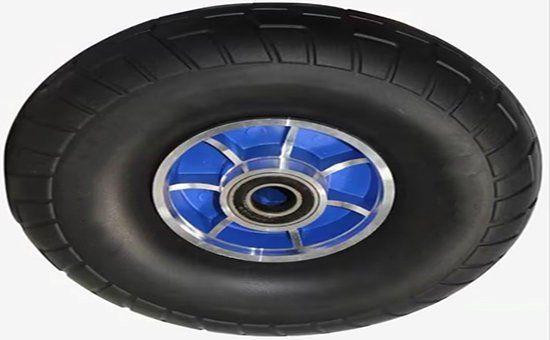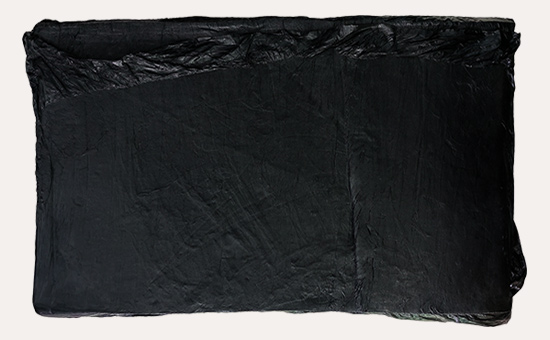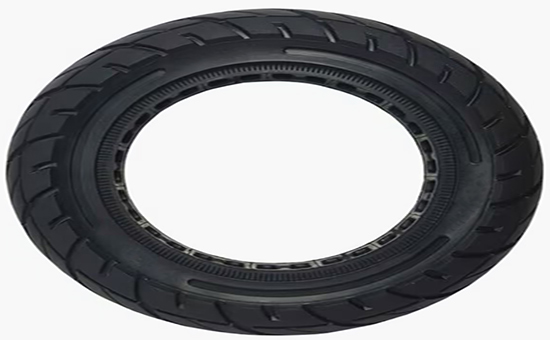
The structure of solid tires is simple, the carcass is solid, does not need to be inflated, mainly used for high-load vehicles or machinery driving at low speeds, and is composed of carcass glue and adhesive rubber; Generally, it is divided into two types: bonded and non-bonded. In actual production, small solid tire carcass rubber and adhesive rubber are generally processed from natural rubber or styrene-butadiene rubber as the main raw materials, and the appropriate use of tire reclaimed rubber can effectively reduce the cost of raw materials.
1. Why can tire reclaimed rubber be used in the production of small solid core tires?

(1) Reduce costs: tire reclaimed rubber is made of waste tires as raw materials, processed through crushing, screening, desulfurization, refining and other processes, the main components are natural rubber, synthetic rubber and carbon black, and natural rubber, general synthetic rubber has good compatibility, low price, and natural rubber, styrene-butadiene rubber combined to prepare small solid tires can effectively reduce rubber costs without affecting the performance of tires.
(2) Improve processing performance: Compared with natural rubber, tire reclaimed rubber has good plasticity and low power consumption. When used in combination with natural rubber and synthetic rubber, tire reclaimed rubber can act as a lubricant and improve the E4LYY527 of rubber fluidity. In addition, the addition of tire reclaimed rubber can reduce the heat sensitivity of unvulcanized rubber compounds, have good vulcanization flatness, and reduce the tendency of natural rubber vulcanization and return to its original state.

2. Vulcanization formula of small solid core tire tire tire reclaimed rubber
(1) Carcass rubber: 12.5 parts of natural rubber, 12.5 parts of styrene-butadiene rubber, 75 parts of tire reclaimed rubber, 2.5 parts of zinc oxide, 0.75 parts of stearic acid, 0.38 parts of antioxidant A, 18.2 parts of carbon black N330, accelerator M 0.62, accelerator DM 0.63, accelerator D 0.12, sulfur 1.8 parts; 125 in total.
(2) adhesive hard rubber layer rubber: 75 parts of natural rubber, 25 parts of tire reclaimed rubber, 4 parts of zinc oxide, 1 part of stearic acid, 33 parts of iron oxide, 11 parts of calcium hydroxide, 35 parts of clay, 1.3 parts of accelerator M, 1 part of accelerator D, 28 parts of sulfur; Total 214.3 copies.

In bonded solid tires, small solid tires generally use hard rubber as the adhesive layer to bond through hot vulcanization.
The rational use of tire reclaimed rubber in the processing of small solid tires can not only reduce the cost of raw materials, but also improve the performance of rubber processing technology. Reasonable design of solid tire carcass rubber and hard rubber layer rubber compound formula containing tire reclaimed rubber can further optimize the performance of the finished product while reducing costs and meet more application needs.
Exclusive original article [commercial authorization] reprint, excerpt and excerpt in any form are prohibited without written authorization. Focus on Hongyun rubber: learn the process formula and raw material technology of producing rubber products from recycled rubber to help you reduce costs and increase profits